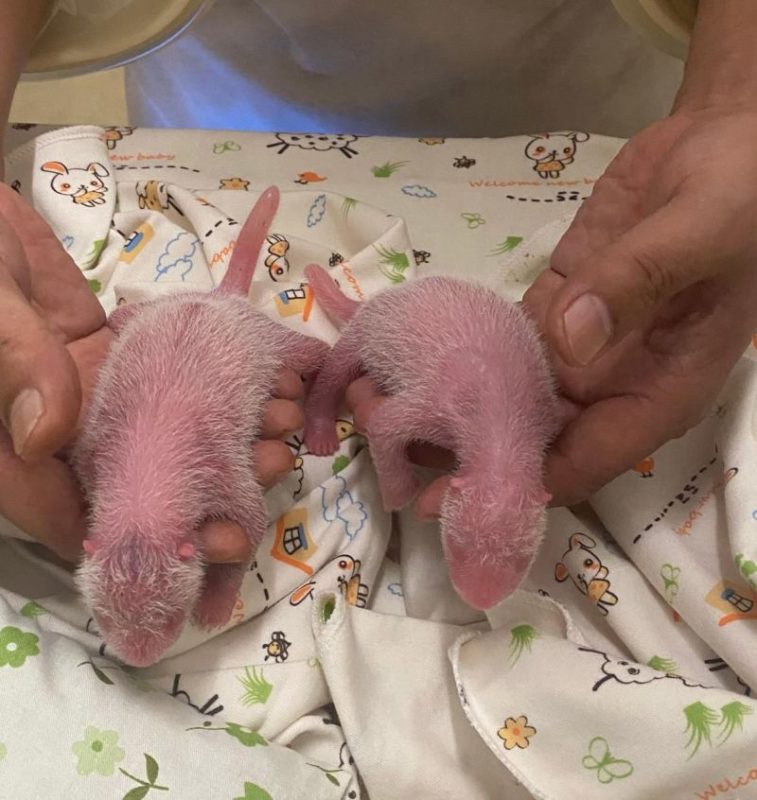A giant panda has given birth to twins after more than a decade of trying to mate successfully, becoming the oldest known first-time panda mother.
Ying Ying delivered the cubs in the early hours of Thursday on the eve of her 19th birthday – equivalent to age 57 in human years, a spokesperson for Hong Kong’s Ocean Park said.
Photos released by the theme park showed Ying Ying just before she went into five hours of labor, and her palm-sized, pink-colored twins – the first giant pandas born in Hong Kong.
The cubs, a female weighing 122 grams (4.2 ounces) and a male at 112 grams (nearly 4 ounces), finally arrived following years of unsuccessful efforts by Ying Ying to mate with her partner Le Le after they were gifted to the city in 2007 by the Chinese government.
“This birth is a true rarity, especially considering Ying Ying is the oldest giant panda on record to have successfully given birth for the first time,” said Paulo Pong, chairman of Ocean Park Corporation, in a statement.
But visitors will have to wait a few months for the cubs’ official debut as the newborns receive round-the-clock intensive care.
“Both cubs are currently very fragile and need time to stabilize, especially the female cub who has a lower body temperature, weaker cries, and lower food intake after birth,” the park said.
Ying Ying had previously suffered a series of miscarriages – and her five-month pregnancy wasn’t easy, the park added.
“Giant pandas have a notoriously difficult time reproducing, especially as they age,” the statement said. “As a first-time mother, Ying Ying was understandably nervous throughout the process. She spent much of her time lying on the ground and twisting.”
Giant pandas have one fertile period throughout the year, lasting just one to three days, and their preference to live alone in their natural habitats means they rarely mate.
Native to southwest China, Beijing has spent decades attempting to boost the population of the iconic bears, creating sprawling reserves across mountain ranges in an effort to save them from extinction.
Giant pandas are infamously hard to breed in captivity, but after years of decline, their numbers in the wild have increased in recent years.
In 2017, the International Union for Conservation of Nature (IUCN) upgraded the species from “endangered” to “vulnerable” after their population grew nearly 17% over the previous decade.
It is estimated that around 1,800 pandas remain in the wild, mostly in the mountains of Sichuan, western China. There are around 600 pandas in captivity and Beijing loans some of them to about 20 countries.

